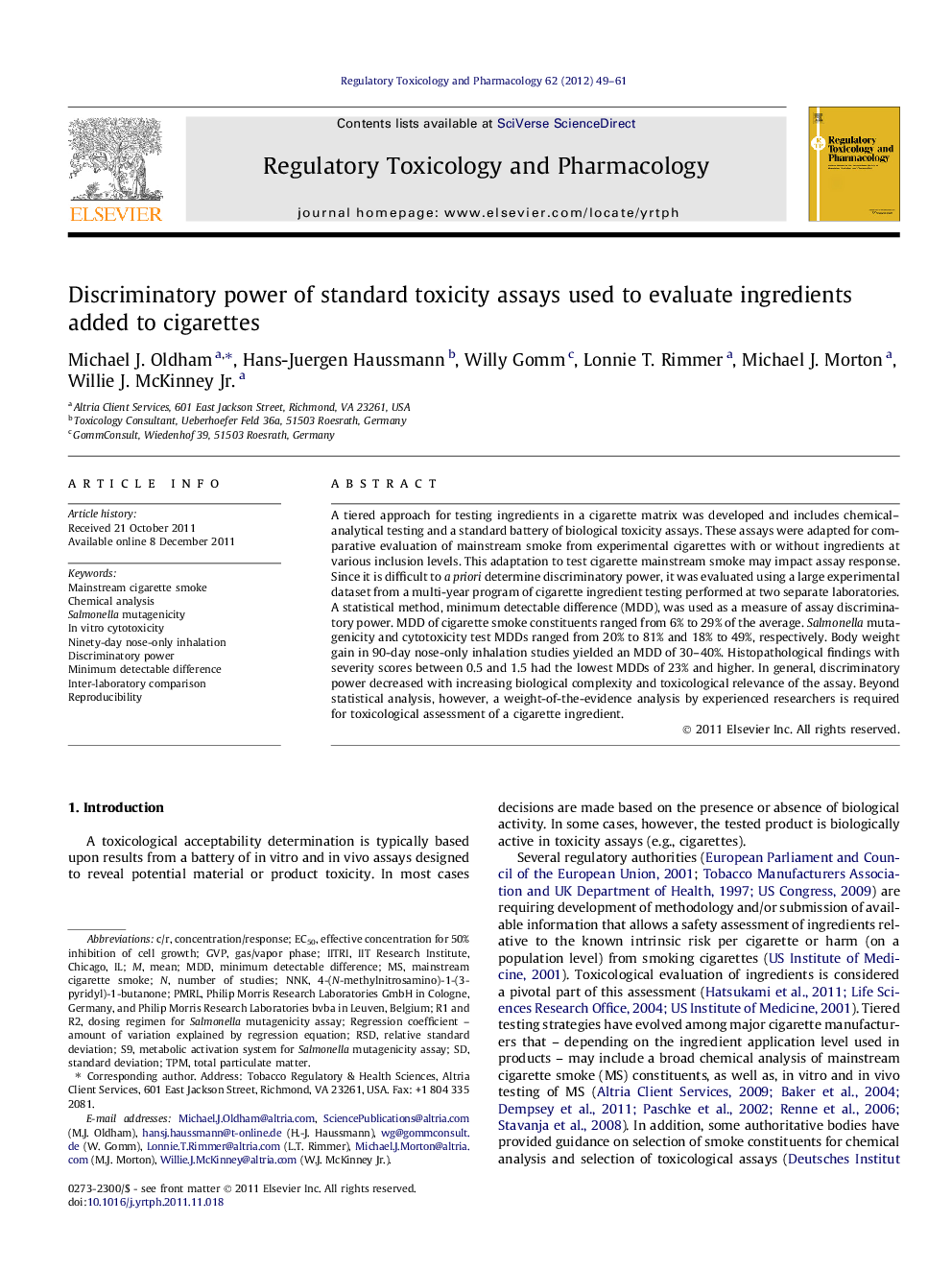| Article ID | Journal | Published Year | Pages | File Type |
|---|---|---|---|---|
| 5857831 | Regulatory Toxicology and Pharmacology | 2012 | 13 Pages |
A tiered approach for testing ingredients in a cigarette matrix was developed and includes chemical-analytical testing and a standard battery of biological toxicity assays. These assays were adapted for comparative evaluation of mainstream smoke from experimental cigarettes with or without ingredients at various inclusion levels. This adaptation to test cigarette mainstream smoke may impact assay response. Since it is difficult to a priori determine discriminatory power, it was evaluated using a large experimental dataset from a multi-year program of cigarette ingredient testing performed at two separate laboratories. A statistical method, minimum detectable difference (MDD), was used as a measure of assay discriminatory power. MDD of cigarette smoke constituents ranged from 6% to 29% of the average. Salmonella mutagenicity and cytotoxicity test MDDs ranged from 20% to 81% and 18% to 49%, respectively. Body weight gain in 90-day nose-only inhalation studies yielded an MDD of 30-40%. Histopathological findings with severity scores between 0.5 and 1.5 had the lowest MDDs of 23% and higher. In general, discriminatory power decreased with increasing biological complexity and toxicological relevance of the assay. Beyond statistical analysis, however, a weight-of-the-evidence analysis by experienced researchers is required for toxicological assessment of a cigarette ingredient.
⺠MDDs can be used to detect false positive/negative results in chemical and toxicity assays. ⺠MDD of chemical and toxicity assays was inversely related to their biological relevance. ⺠MDD for histopathology results near severity score boundaries are not valid. ⺠Weight-of-the-evidence approach balancing strengths/weaknesses of assays is required.
